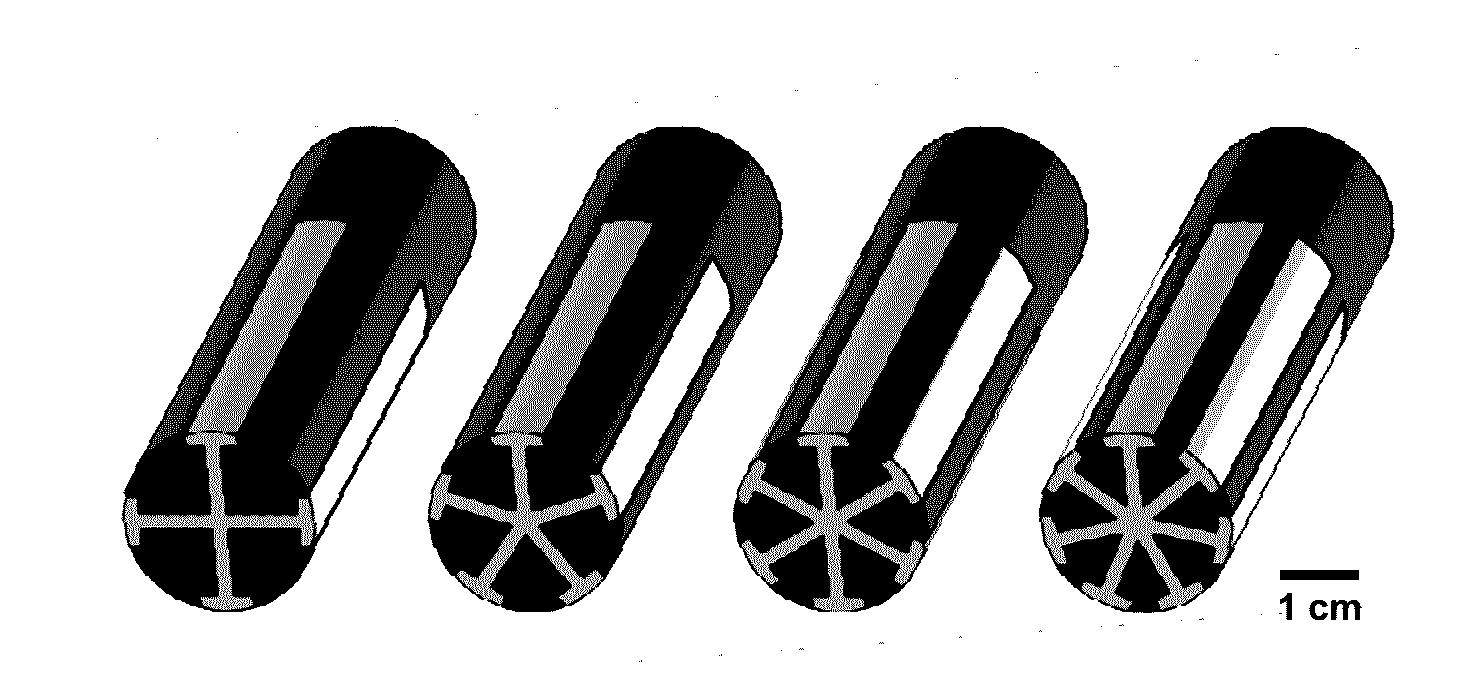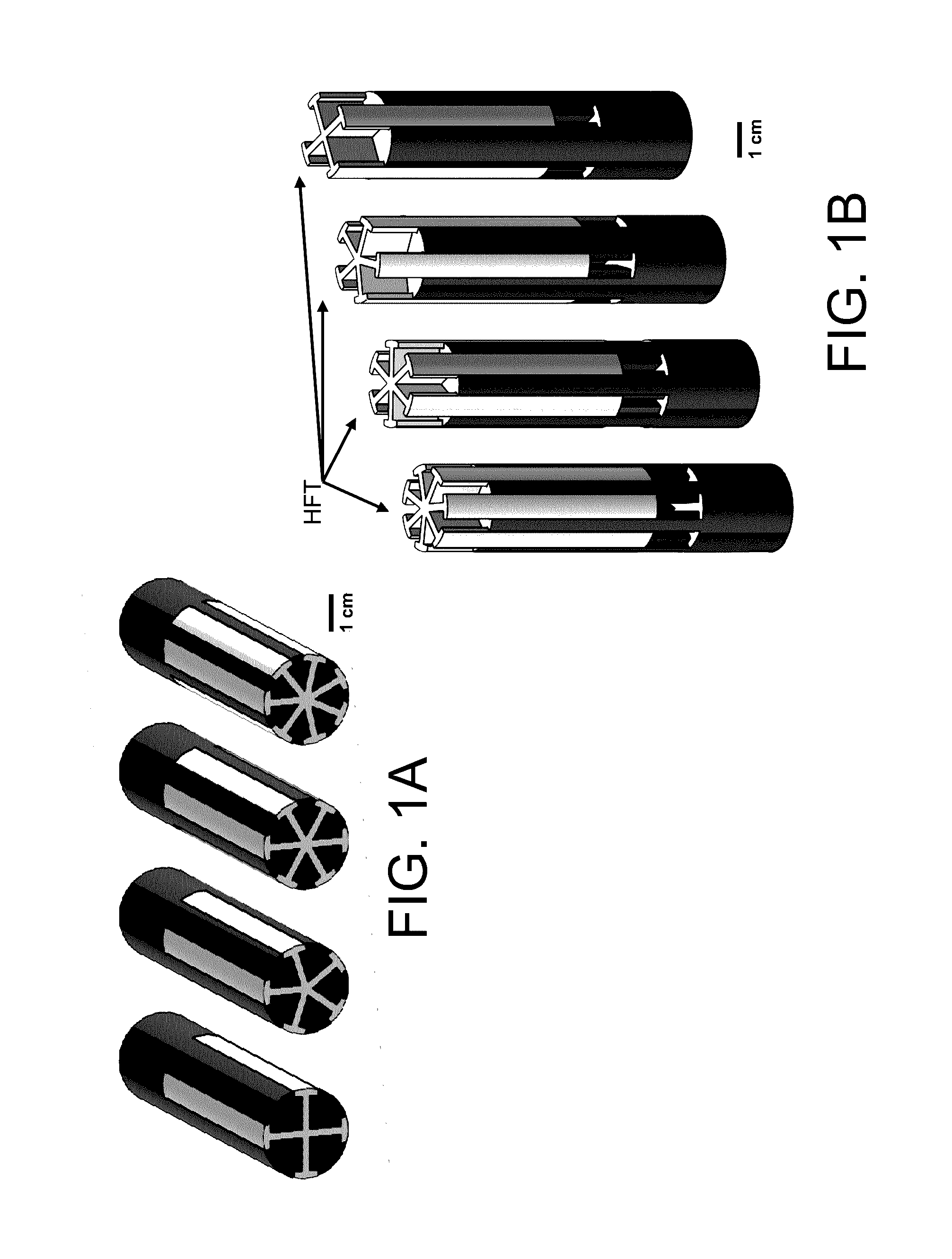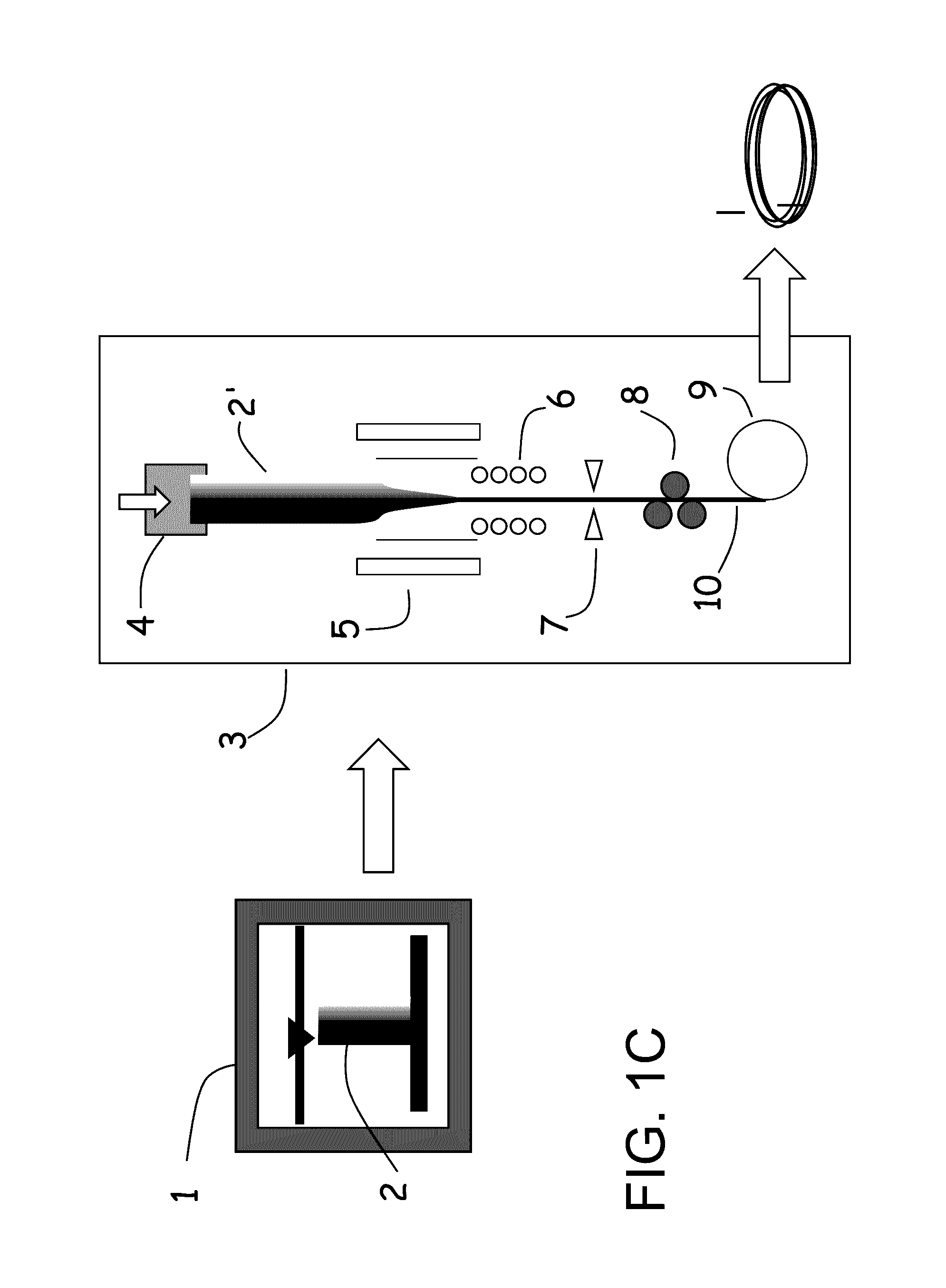Microstructured materials
a microstructured material and material technology, applied in the field of materials, can solve the problems of low mechanical and functional properties, low yield, and low yield of filaments with a majority of high flow-temperature polymers, and achieve the effects of reducing surface roughness, preserving dimensional stability, and high mechanical and functional properties
- Summary
- Abstract
- Description
- Claims
- Application Information
AI Technical Summary
Benefits of technology
Problems solved by technology
Method used
Image
Examples
example 1
[0095]A preform is made using an acrylonitrile butadiene styrene (ABS) LFT polymer core with a glass transition temperature (Tg) of approximately 105° C., and extruded acrylic (PMMA) HFT polymer sheath with a Tg of approximately 125° C. The source materials for the core were obtained from Stratasys (Eden Prairie, Minn.). The source materials for the extruded acrylic sheath is from McMaster Carr (Robbinsville, N.J.). The preform combines a printed ABS core made on a dual-head MAKERBOT REPLICATOR 2× (MAKERBOT Industries, LLC, Brooklyn, N.Y.) inserted within an extruded acrylic tube. The core was sized with some interference so that the fit into the sheath was mechanically tight. The resulting preform is illustrated in FIG. 2A. Thermally drawing this material resulted in monofilament such as shown in FIG. 2B, with an outer diameter of 2.5 mm while accurately replicating the original geometry of the preform. This example shows that dual materials can be co-drawn with this process, and t...
example 2
[0096]A preform is made using a printed polycarbonate (PC) core and an extruded polycarbonate tube. The source materials for the core were obtained from Stratasys (Eden Prairie, Minn.), while the extruded polycarbonate tubing is from McMaster Carr (Robbinsville, N.J.). The preform combines a printed PC core made on a Stratasys Fortus (Eden Prarier, Minn.) where the core includes a relatively complex cross shape that is maintained when inserted within an extruded PC tube. The resulting preform is illustrated in FIGS. 3A and B.
[0097]The preform is thermally drawn down to monofilament to create a four-lobed microfluidic fiber with opaque inner walls and an optically transparent outer wall such as shown in FIGS. 3C and 3D, with an outer diameter of approximately 600 μm while accurately replicating the original geometry of the preform. This example shows that dual materials can be co-drawn with this process while maintaining the shape of the original preform and relative dimensions there...
example 3
[0099]Complex interlocking preforms are produced by independently printing by FFF processes two independent interlocking shapes, the LFT polymer is ABS with a glass transition temperature (Tg) of approximately 105° C., and the HFT polymer is polycarbonate (PC) with a Tg of approximately 147° C. The individual polymer shapes are printed using a Stratasys Fortus (Eden Prarier, Minn.). The two components were sized with some interference so that the fit when combined was mechanically tight. The two components are fit together to produce the preform as illustrated in FIG. 5A illustrating the two elements in an intermediately combined state.
[0100]The preform is thermally drawn down to a five-lobed monofilament with interlocking polymers as shown in FIG. 5B, with an outer diameter of approximately 1.6 mm while accurately replicating the original geometry of the preform. The preform is thermally drawn to a finer scale, five-lobed filament with interlocking polymers as shown in FIG. 5C, wit...
PUM
| Property | Measurement | Unit |
|---|---|---|
| diameter | aaaaa | aaaaa |
| diameter | aaaaa | aaaaa |
| outer diameter | aaaaa | aaaaa |
Abstract
Description
Claims
Application Information
 Login to View More
Login to View More - R&D
- Intellectual Property
- Life Sciences
- Materials
- Tech Scout
- Unparalleled Data Quality
- Higher Quality Content
- 60% Fewer Hallucinations
Browse by: Latest US Patents, China's latest patents, Technical Efficacy Thesaurus, Application Domain, Technology Topic, Popular Technical Reports.
© 2025 PatSnap. All rights reserved.Legal|Privacy policy|Modern Slavery Act Transparency Statement|Sitemap|About US| Contact US: help@patsnap.com



